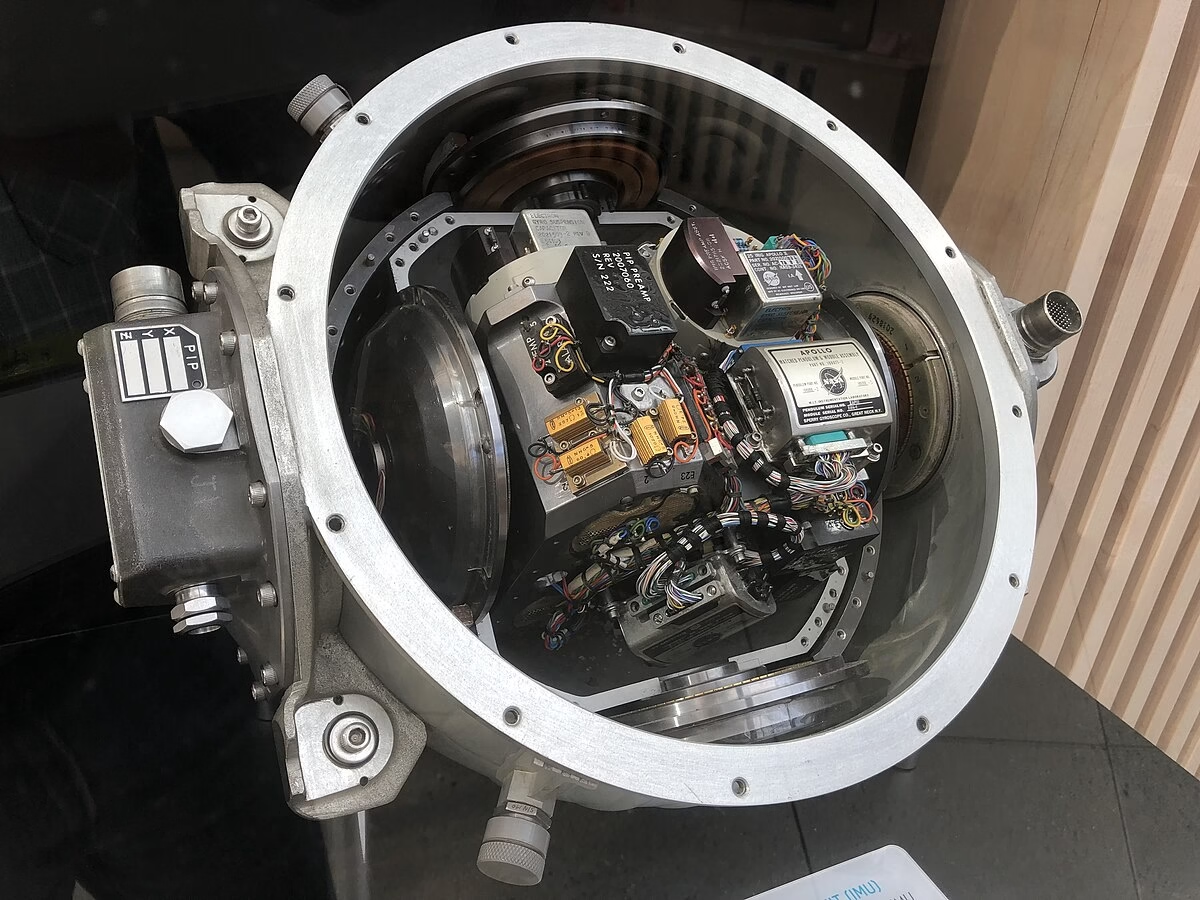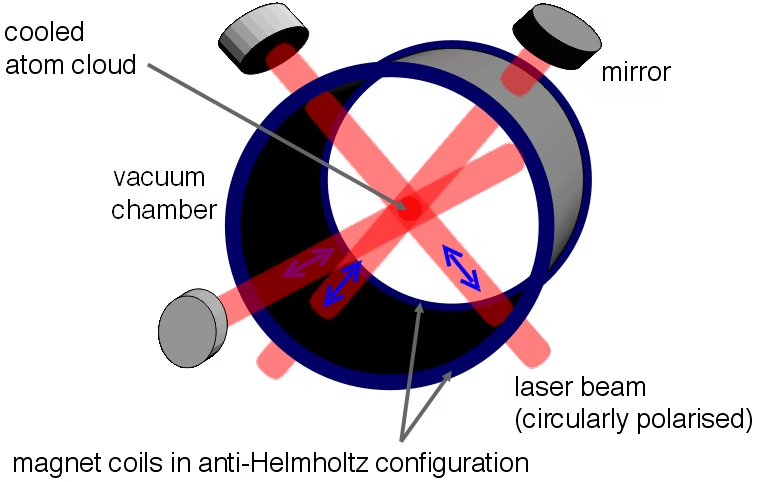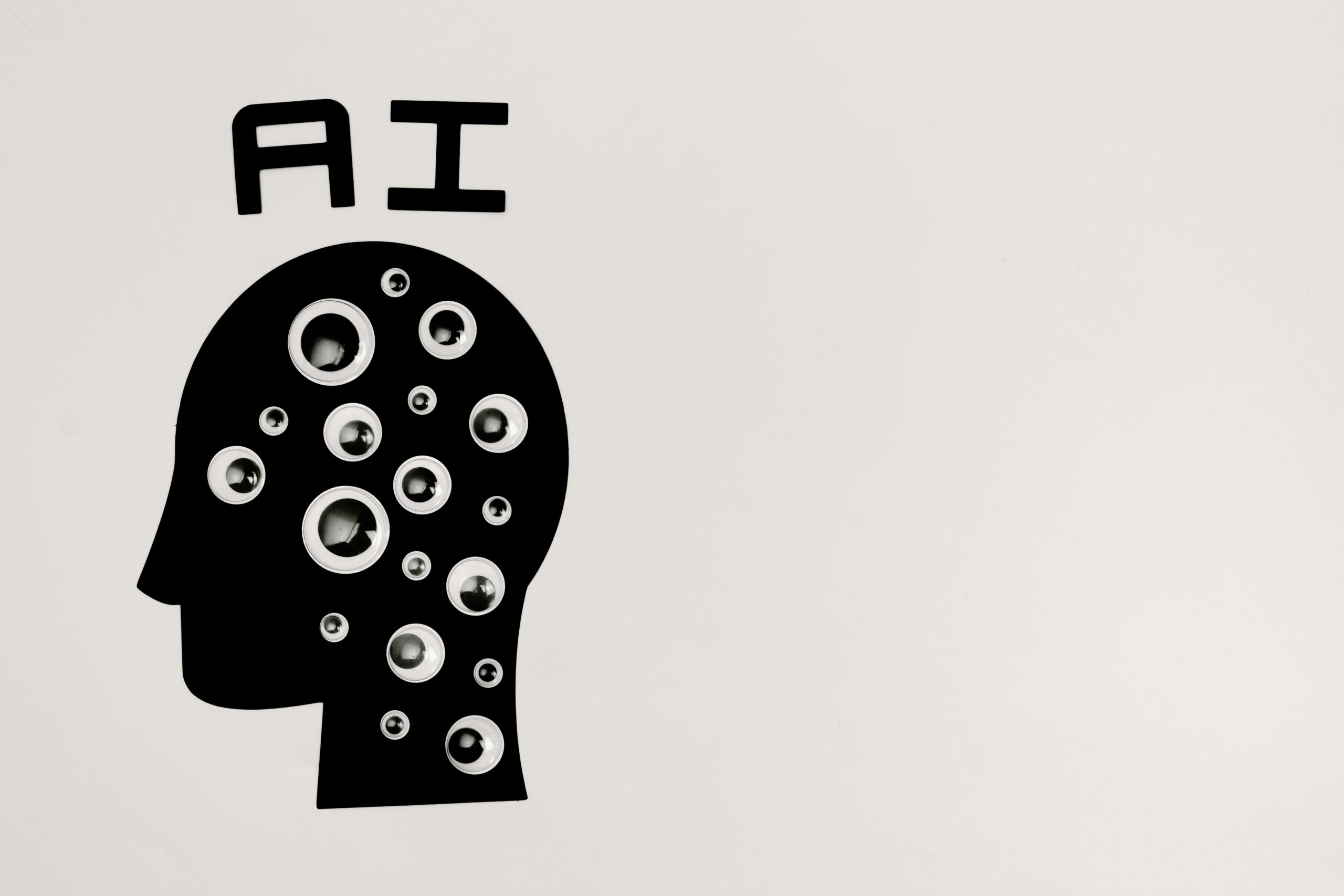The reliance on Global Navigation Satellite Systems (GNSS), such as GPS, for navigation has become fundamental to modern life, guiding everything from international flights to personal vehicles. However, this dependency is increasingly facing significant threats from intentional disruption. Instances of aircraft inexplicably finding themselves thousands of miles off course highlight a startling vulnerability in the systems we trust for global positioning. What happens when the system guiding everything from your commute to global supply chains suddenly becomes unreliable? This concerted activity aims to disrupt navigation, prompting an urgent need for alternative, more resilient solutions using Quantum Navigation like the Quantum Positioning System (QPS).
Table of Contents:
- The Growing Threat to GPS Navigation
- Traditional Solutions: Dead Reckoning
- A Quantum Leap in Navigation: The Quantum Positioning System (QPS)
- Creating the Quantum State: Bose-Einstein Condensates
- Navigating with Matter Waves: Atom Interferometry
- Overcoming Real-World Challenges
- Demonstrating Capability: Flight Testing
- Beyond Navigation: Other Potential Applications
- The Future Trajectory of Quantum Navigation
- What can you do?
The Growing Threat to GPS Navigation
The precision offered by GPS relies on signals from a constellation of satellites. These satellites constantly transmit their position and the exact time from their onboard clocks. A receiver on the ground or in a vehicle calculates its distance from multiple satellites by measuring how long these radio signals take to arrive.

Since radio waves travel at the speed of light, multiplying this travel time by the speed of light provides the distance to each satellite. By calculating the distance to three or more satellites, the receiver can determine its precise location on the planet through a process known as trilateration.
Real-World Incidents
Disturbances to GPS signals are not theoretical; they are occurring frequently. Data from global survey activity monitoring GPS threats reveals a significant increase in signal interference and failure rates in various regions. One notable area of high compromise is precisely along the flight path between Helsinki and Tartu. Internet investigations, by analyzing signal strength and assuming line-of-sight requirements for such attacks, localized a likely source of this phenomenon to just west of St. Petersburg. Another area exhibiting a significant GPS ‘dead zone’ researchers identified in the USA, west of San Antonio. These disruptions can have severe consequences for aviation and other critical infrastructure.

Why GPS is Vulnerable
While remarkably useful, GPS is susceptible to various forms of interference:
- Natural Jamming: Natural obstacles like large buildings, mountains, or underground environments can naturally block signal reception, such as during subway travel.
- Intentional Jamming: Cheap and readily available devices can simply overpower and block the faint GPS signals from satellites.
- Spoofing: A more complex form of attack involves transmitting fake GPS signals that trick a receiver into believing it is in a different location than its actual position. This can be used in military contexts or even for mundane purposes, as demonstrated by delivery drivers reportedly using spoofing devices to conceal unauthorised breaks.
These vulnerabilities collectively undermine the reliability of GPS, particularly in critical situations.
Traditional Solutions: Dead Reckoning
When GPS signals are unavailable or unreliable, systems often fall back to an older navigation technique called dead reckoning. This method estimates current position based on a previously determined position, or fix, and advancing that position based on known or estimated speeds over elapsed time and course.
Historical Methods
Dead reckoning has a long history, dating back to sailors in the 1600s navigating the globe. Early methods relied primarily on a compass for direction and estimates of speed. Sailors determined a ship’s speed by using a log with a rope tied to it, thrown overboard.

Knots were tied in the rope every 47 feet, and by counting how many knots were pulled out by the log in a specific time, the ship’s speed could be estimated. This gave rise to the term ‘knots’ as a unit of speed, still used today by maritime vessels and aircraft. While effective for its time, these manual methods were prone to inaccuracies accumulating over long journeys.
Modern Inertial Measurement Units (IMUs)
During the mid-20th century, particularly accelerated by the demands of World War II, dead reckoning systems evolved to use automated sensors that measure acceleration rather than just velocity. These devices work by measuring changes in motion and using integration to calculate velocity from acceleration, and then position from velocity over time.
This principle can be understood by imagining being in a moving vehicle and sensing the forces of acceleration and deceleration. The device that measures these movements is called an Inertial Measurement Unit or IMU. It contains sensors like accelerometers and gyroscopes that measure inertial forces. An IMU can track position without external signals, relying on the fundamental laws of physics, including Newton’s third law of motion: every action has an equal and opposite reaction.

An analogy that can be used is imagining a person (like Einstein) in a rocket ship, feeling forces as the ship accelerates. This makes IMU-based systems inherently difficult to hack or jam externally, as they only require a known starting position.
Limitations of Traditional Dead Reckoning
Despite their robustness against external interference, traditional IMUs suffer from a critical limitation: error accumulation. The sensors used have unavoidable levels of drift and noise, which, when integrated over time, cause the calculated position to diverge from the true position.

This means that while an IMU is accurate over short periods, the uncertainty in its position grows steadily over time. This drift makes traditional inertial navigation unsuitable for long-duration navigation without periodic updates from external systems like GPS. For applications like submarine navigation, where GPS signals cannot penetrate underwater, this limitation is particularly challenging.
A Quantum Leap in Navigation: The Quantum Positioning System (QPS)
To overcome the drift and noise limitations of traditional inertial navigation, scientists are developing a new approach based on quantum mechanics. This system, referred to as a Quantum Positioning System (QPS) or quantum inertial navigation system, aims to provide highly accurate positioning without relying on external signals.
Addressing the Limitations
The goal is to build an inertial measurement system with significantly higher sensitivity and lower drift than conventional IMUs. By leveraging the precise and predictable behavior of matter at the quantum level, these systems promise unparalleled accuracy, making prolonged navigation without external reference possible.
Leveraging Quantum Mechanics
The foundation of this quantum navigation technique lies in controlling and manipulating matter in extreme states, specifically at ultra-cold temperatures. This taps into fundamental quantum properties of matter, allowing for measurements of acceleration and rotation with exquisite precision.
Creating the Quantum State: Bose-Einstein Condensates
A key component of the quantum navigation system involves creating and utilising a unique state of matter known as a Bose-Einstein Condensate (BEC).
Cooling Atoms with Lasers (Doppler Cooling)
The process begins by cooling atoms to temperatures mere billionths of a degree above absolute zero. Scientists achieve this using a seemingly counterintuitive technique called Doppler cooling, which employs lasers. While lasers typically heat materials, here they use lasers to slow atoms down.
The basic principle relies on the interaction between photons (light particles) from the laser beams and the atoms. Scientists direct lasers at the atom from all directions. They tune the laser light to a frequency slightly lower (red-shifted) than the frequency the atom naturally absorbs.
However, if an atom moves towards a laser beam, the Doppler effect causes the light from that beam to appear slightly higher in frequency (blue-shifted) to the atom. This brings the light closer to the atom’s absorption frequency, making it more likely to absorb the photon.
When an atom absorbs a photon, it experiences a recoil in the opposite direction of its motion, slightly reducing its speed. As the atom re-emits the photon in a random direction, the net effect over many absorptions and emissions is a reduction in the atom’s kinetic energy, effectively cooling it down.

By applying lasers from six directions, they can slow atoms almost to a standstill. This exploits the Doppler effect, the same phenomenon you observe when the pitch of a car engine sound changes as it moves towards or away from an observer.
Trapping Atoms (Magnetic Optical Trap)
Simply slowing the atoms is not enough; they must also hold them in a specific region of space. Scientists achieve this by adding a magnetic field, creating what they call a Magnetic Optical Trap (MOT).

The magnetic field creates a restoring force that pulls the cooled atoms towards the centre of the trap, preventing them from escaping and touching the walls of the vacuum chamber, which would instantly heat them up. Using multiple laser beams (e.g., six beams arranged in three dimensions) and a magnetic field, they can reliably trap a cloud of ultra-cold atoms.

Achieving the BEC State
Once cooled and trapped, scientists further manipulate the atoms to reach temperatures extremely close to absolute zero, inducing the formation of a Bose-Einstein Condensate. Atoms, when scientists view them as matter waves, have wavelengths inversely proportional to their momentum; the colder they get, the lower their momentum, and the larger their wavelength.
When the wavelengths of the atoms become large enough to overlap with the spacing between them, they condense into a single, coherent quantum state: the Bose-Einstein Condensate. Unlike particles governed by the Pauli Exclusion Principle (like electrons), which cannot occupy the same quantum state, bosons (atoms with integer spin, such as Rubidium 87 or Sodium 23 can condense into the lowest energy state.


In this state, a large fraction of the atoms behave as a single, giant ‘super-atom,’ and you can observe quantum effects at a macroscopic scale. BECs can exhibit properties like superfluidity and, crucially for navigation, demonstrate wave-particle duality by interfering with themselves like a wave.
Navigating with Matter Waves: Atom Interferometry
Scientists utilize the ability of a BEC to behave as a coherent matter wave for precise navigation through a technique called atom interferometry.
Interferometry Principles
Interferometry is a measurement technique that uses the interference pattern created when two or more waves are combined to extract information. Experiments like LIGO (Light Interferometry Gravitational-wave Observatory) famously use it to detect gravitational waves by observing how they affect light waves in a large interferometer.
In this quantum navigation system, instead of interfering light waves, they exploit the matter wave nature of the BEC. Think of it like dropping two pebbles into a pond at slightly different times; the ripples they create will interfere, forming a pattern that tells you about the timing difference. Atom interferometry uses a similar principle, but with matter waves instead of water waves.
Splitting and Recombining Atom Clouds
The process involves splitting the BEC into two separate clouds of atoms using precisely timed laser pulses. These pulses act like mirrors or beam splitters for the matter wave, causing the atoms to move in opposite directions. After a period, scientists apply further laser pulses to coherently flip the momentum of the atom clouds, causing them to move back towards each other and recombine.
Measuring Acceleration with BECs
The critical insight is that any acceleration or rotation experienced by the system during the time the atom clouds are separated will introduce a phase difference between the two matter waves. When the clouds recombine, this phase difference results in an interference pattern.
By taking an image of the recombined atom cloud and analysing the distribution of atoms across different momentum states, scientists can read out this interference pattern. This pattern serves as a ‘fingerprint’ of the acceleration experienced by the system during the measurement cycle.
Because the measurement process (imaging the cloud) destroys the BEC state, scientists must repeat the entire cycle of cooling, trapping, BEC formation, splitting, manipulation, recombination, and imaging, currently yielding one measurement approximately every second. This process offers the potential for measuring motion with exquisite precision.
Overcoming Real-World Challenges
Developing a quantum system that operates reliably outside a controlled laboratory environment presents significant engineering challenges.
Fighting Noise and Vibration
Quantum systems are highly sensitive to environmental noise, both mechanical vibrations and electromagnetic interference. In a typical physics lab, scientists often conduct experiments on vibration-isolated tables and within shielded environments to minimize these disturbances.
Deploying such a system on a moving platform like an aircraft, which experiences significant vibration from engines and exposure to various electromagnetic signals (e.g., weather radar, air traffic control communications), introduces substantial noise that can disrupt the delicate quantum states required for measurement.
Moving from Lab to Deployment
The challenge lies in making the complex laboratory setup robust and portable enough for practical applications. This requires miniaturizing components, engineering systems that can withstand dynamic environments, and developing techniques to maintain the required ultra-cold temperatures and precise laser and magnetic field control under real-world conditions.
Demonstrating Capability: Flight Testing
Despite the inherent difficulties, significant progress has been made in transitioning these quantum technologies from the lab to deployment platforms.
The Aircraft Environment
Recent work has successfully demonstrated the operation of a quantum navigation system onboard a research aircraft. This environment is far removed from the typical conditions of a research laboratory, involving constant motion, vibration, and electromagnetic noise.
Observing the BEC in Flight
During these flight tests, the system successfully produced Bose-Einstein Condensates while the aircraft was in motion. By using techniques like absorption imaging (essentially looking at the shadow the atoms create when illuminated by a laser, scientists were able to observe the BEC and even demonstrate the first stages of the interferometry sequence, such as splitting the BEC into multiple clouds. The ability to perform these delicate quantum manipulations while the aircraft is banking and moving highlights the system’s increasing robustness.
Proving Robustness
Successfully creating and manipulating BECs in such a dynamically challenging environment validates the potential of quantum inertial navigation. It demonstrates that quantum systems are becoming increasingly robust and capable of operating outside of ideal laboratory conditions, paving the way for real-world applications previously considered impossible.
Beyond Navigation: Other Potential Applications
The core technology developed for quantum navigation – highly sensitive measurement of acceleration and gravity using atom interferometry – has implications far beyond positioning.
Gravity Measurement
Since acceleration and gravity are fundamentally linked (as illustrated by the analogy of feeling forces in an accelerating rocket), these quantum sensors are also exquisitely sensitive to changes in the local gravitational field.
Autonomous Vehicles and Space
Precise gravity measurements could enable subterranean mapping, helping identify mineral deposits, map tunnels, or understand geological formations. In navigation, sensitive gravity mapping could potentially aid autonomous vehicles navigating complex urban environments where GPS signals are blocked by tall buildings or even assist in navigating space missions where GPS is unavailable.
The Future Trajectory of Quantum Navigation
The current state of quantum navigation technology represents the beginning of a new development curve.
Miniaturisation and Ruggedisation
The first generation of these systems is likely to be relatively large, rack-mounted units suitable for integration into ships or aircraft. The longer-term goal is miniaturisation and ruggedisation of these systems significantly, potentially using integrated photonics to print lasers, optics, and atom vapour cells onto silicon chips. The vision is a device that could eventually fit in the palm of your hand [insert image here – 1155.64].
Comparison to Existing Technology Limits
Existing inertial navigation technologies, such as fibre optic gyroscopes or ring laser gyroscopes, have reached a plateau in their performance after decades of intensive engineering. Quantum technologies, however, are just at the start of their development trajectory, offering the potential for step-change improvements (e.g., 10x or 100x performance gains) that are not feasible with current methods. As GPS vulnerabilities increase, with reports indicating approximately 900 flights per day on average encountering spoofing as of 2024, the need for these highly accurate, independent navigation systems becomes ever more pressing.
What can you do?
Understanding the vulnerabilities of current navigation systems and the potential of emerging technologies is crucial in a world increasingly dependent on precise positioning. Stay informed about developments in quantum technology and its applications. Support research and development in this critical field. Share this information to raise awareness about the challenges and the innovative solutions being developed.
Read about how scientists had a 20-minute conversation with whales!!
Medicine 4.0: Self-Regulating Insulin for Diabetes!!


[…] Read more about Quantum Navigation: Beyond GPS Vulnerability. […]